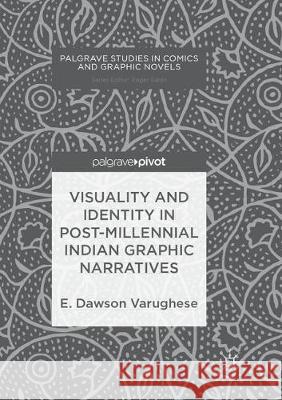Visuality and Identity in Post-Millennial Indian Graphic Narratives » książka
topmenu
Visuality and Identity in Post-Millennial Indian Graphic Narratives
ISBN-13: 9783319887869 / Angielski / Miękka / 2018 / 119 str.
Kategorie:
Kategorie BISAC:
Wydawca:
Palgrave MacMillan
Seria wydawnicza:
Język:
Angielski
ISBN-13:
9783319887869
Rok wydania:
2018
Wydanie:
Softcover Repri
Ilość stron:
119
Waga:
0.18 kg
Wymiary:
21.08 x 19.56 x 0.51
Oprawa:
Miękka
Wolumenów:
01











